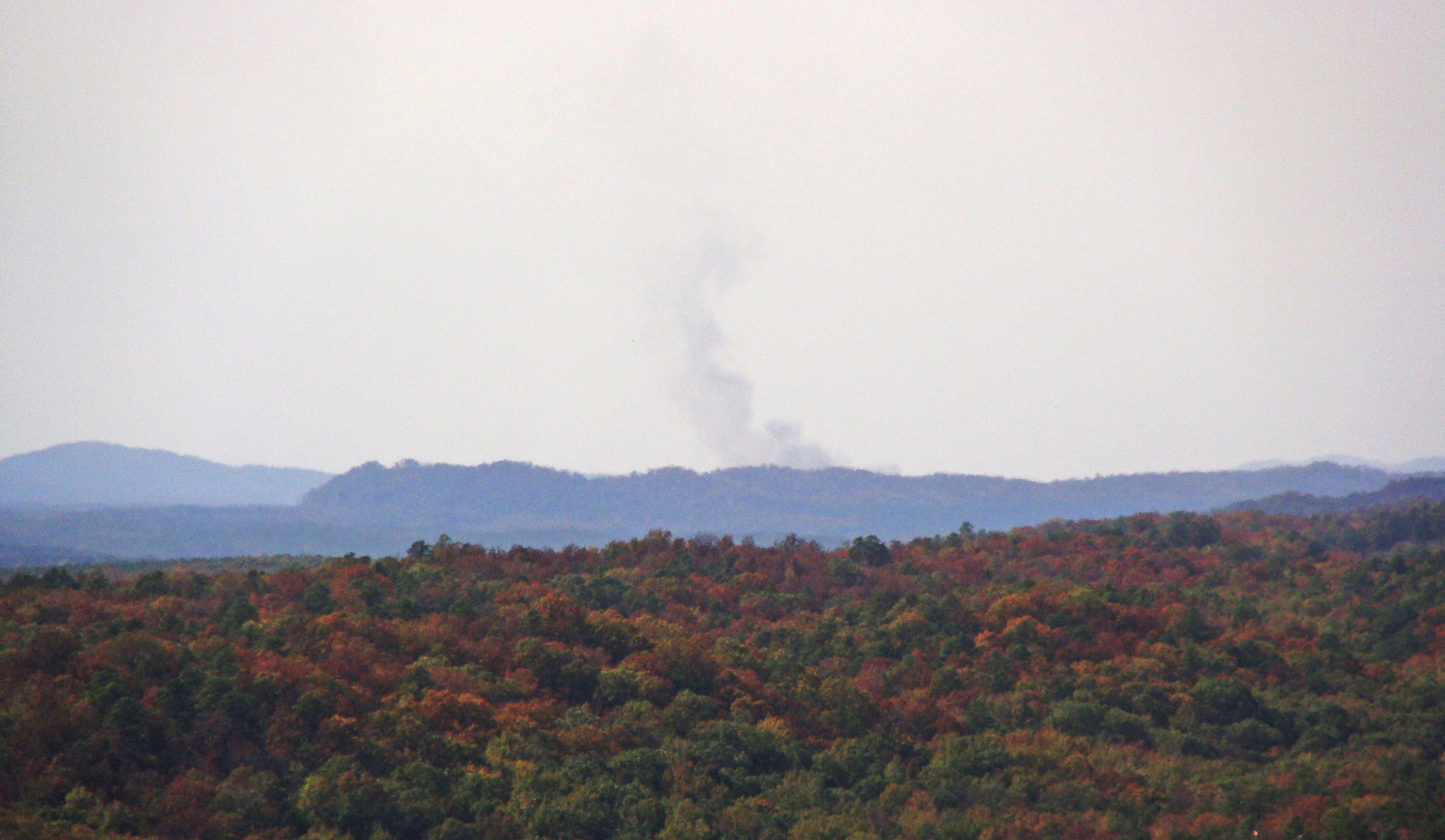Incoming Gulf moisture may lower fire risk; rain possible Saturday
By Mary HightowerU of A System Division of Agriculture
Fast facts:
-
- Download ‘Be Aware and Prepare: Wildfires’ fact sheet here: http://www.uaex.uada.edu/environment-nature/disaster/docs/BeAware_Wildfires.pdf
- To check local burn bans, see www.arkfireinfo.org.
(490 words)
(Newsrooms: with sidebar: 1019Ark-FireWeather; with art: www.flickr.com/photos/uacescomm/21682797433)
LITTLE ROCK – The grass is crunchy and crowded with dried leaves. The wind is blowing and the relative humidity is somewhere south of 30 percent. This is wildfire weather.
The National Weather Service in Little Rock issued a fire weather watch from Saturday morning into Monday. On Monday, 57 of Arkansas’ 75 counties were under burn bans issued by their county judges. Wildfire danger was extreme in 40 counties; the remainder were under high fire danger. (See www.arkfireinfo.org to check local burn band/wildfire danger status.)

The Arkansas Forestry Commission reported that as of Oct. 15, 12,732 acres have burned in Arkansas, at 996 reported wildfires, so far this year.
The good news, according to Joe Goudsward, senior forecaster/incident meteorologist for the National Weather Service at Little Rock, that the state should “moisten up on Tuesday.”
“We’re going to have southwesterly winds pulling moisture from the Gulf, but we may not see precipitation until Saturday,” he said on Sunday. However, until then, “we will see dew points increase.”
Goudsward said “this is normally a wet time of year for us. December, January and February is our normal fire season for Arkansas.”
Preventing wildfires
When everything is so dry, “it only takes one spark,” said Tamara Walkingstick, extension forester for the University of Arkansas System Division of Agriculture and associate director of the Arkansas Forest Resources Center.
While most people think about campfires as culprits, wildfires can be caused by otherwise automatic or innocuous actions, like flicking cigarette ashes, or even parking a car with a hot exhaust pipe in tall grass.
“I saw a driver this morning toss out a cigarette,” she said. “It could easily have started a fire if he'd thrown it toward the side of the road.”
Fires can also be started by the sparks thrown when mower and bush hog blades strike rocks.
“Homeowners should be cautious using charcoal or other open flame grills and they might reconsider using that fire pit in the backyard,” Walkingstick said. “And absolutely no trash burning.”
“Even when the fire danger isn’t high, always have water on hand in the event a coal or ember escapes,” she said.
Walkingstick urged homeowners to take extra precautions around their homes to remove flammable items. “Rake all leaves away from home and off of wooden porches. Rake pine needles and leaves from roofs,” she said.
With the muzzleloading deer season that began this past weekend, the Arkansas Forestry Commission urged hunters to be extra careful by stomping out any sparks created by firing their guns and not lighting any campfires.
Be ready if disaster strikes. Download “Be Aware and Prepare: Wildfires” from
www.uaex.uada.edu/environment-nature/disaster/docs/BeAware_Wildfires.pdf.
To report a wildfire, call the Arkansas Forestry Commission Dispatch Center to report wildfires at 1-800-468-8834. Report emergencies by calling 911.
Pursuant to 7 CFR § 15.3, the University of Arkansas System Division of Agriculture offers all its Extension and Research programs and services (including employment) without regard to race, color, sex, national origin, religion, age, disability, marital or veteran status, genetic information, sexual preference, pregnancy or any other legally protected status, and is an equal opportunity institution.
# # #
Media Contact: Mary Hightower
Dir. of Communication Services
U of A Division of Agriculture
Cooperative Extension Service
(501) 671-2126
mhightower@uada.edu
Related Links